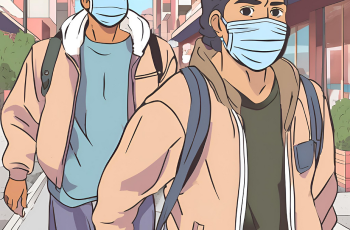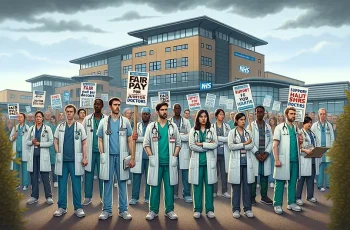The pandemic became a stark reality for a junior doctor on March 12, 2020, when a consultant shared alarming news from Italy about the devastating impact of COVID-19. Initially, the day felt ordinary, but the gravity of the situation quickly set in as the medical team prepared for an impending crisis. Despite having no confirmed cases at their hospital, the staff gathered to strategize their response to the looming threat.

By March 13, the doctor was on call, managing a demanding thirteen-hour shift. During this time, they received urgent requests to check on critically ill patients who had been moved from the intensive care unit to make room for incoming COVID-positive cases. The pressure mounted as the medical team faced the reality of caring for patients with severe health conditions, requiring difficult decisions about who would receive intensive care.
As the days progressed, the hospital atmosphere shifted dramatically. On March 18, the doctor noted a calm before the storm, discharging as many patients as possible to prepare for an influx of COVID cases. The ward began to feel emptier, a premonition of the chaos that was about to unfold. Late that night, after a busy on-call shift, the doctor reflected on the changes ahead, anticipating a reorganization that would require them to work in different areas of the hospital.
By March 20, the doctor was actively working on a COVID-positive ward, where patients were cohorted for easier management. The situation quickly became overwhelming, and the doctor felt the weight of responsibility as they encountered patients in dire conditions. The stress intensified when they faced challenges they had never encountered before, such as dealing with a patient who was violently ill.
The following week, on March 23, the doctor received a distressing message: the hospital was running low on oxygen supplies. This urgent situation illustrated the escalating crisis within the healthcare system. The doctor felt the strain of their role as they navigated the complexities of patient care during a pandemic, often feeling underprepared and overwhelmed.
As the situation worsened, the doctor observed disparities in protective equipment across different hospitals. While some staff members in other areas had access to advanced protective gear, their hospital provided minimal protection, leading to feelings of abandonment and frustration. The frequent changes in guidelines regarding PPE only added to the confusion and anxiety surrounding their safety.
By April 4, the ward had transformed into a high dependency unit, and the hospital finally implemented a coherent plan to manage the crisis. The doctor felt a sense of relief with improved safety measures and adequate equipment, allowing them to perform their duties more effectively. However, the emotional toll of the pandemic remained significant, as they witnessed the struggles of patients and families.
Visitor restrictions were enforced to protect patients and staff, creating additional challenges. Families were anxious and upset, unable to be with their loved ones, and the staff had to bear the burden of communicating difficult news. The doctor felt a deep sense of duty to keep families informed, often making exhausting phone calls at the end of long shifts.
The most heartbreaking moments came when patients were left alone in their final days. One patient, whose daughter was too fearful to visit, spent her last moments in silence, waiting for an end that felt unbearably lonely. The doctor grappled with their inability to provide comfort, wishing they could have offered companionship or solace.

Throughout these harrowing experiences, the junior doctor faced the harsh realities of working during a pandemic, balancing their responsibilities with the emotional weight of witnessing suffering and loss. The ongoing challenges highlighted the need for systemic support and recognition of all healthcare workers, from doctors to support staff, who played vital roles in navigating the crisis.




